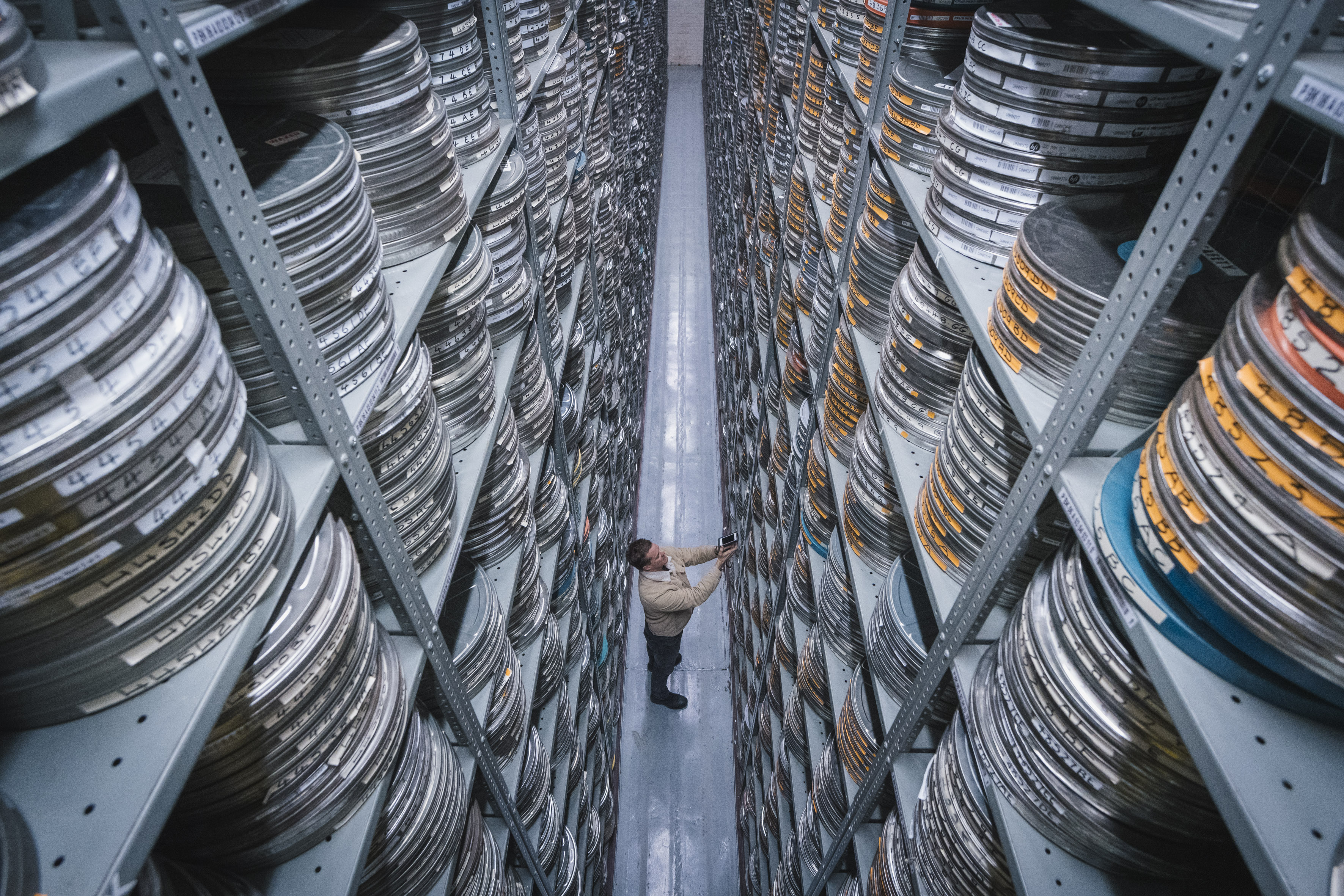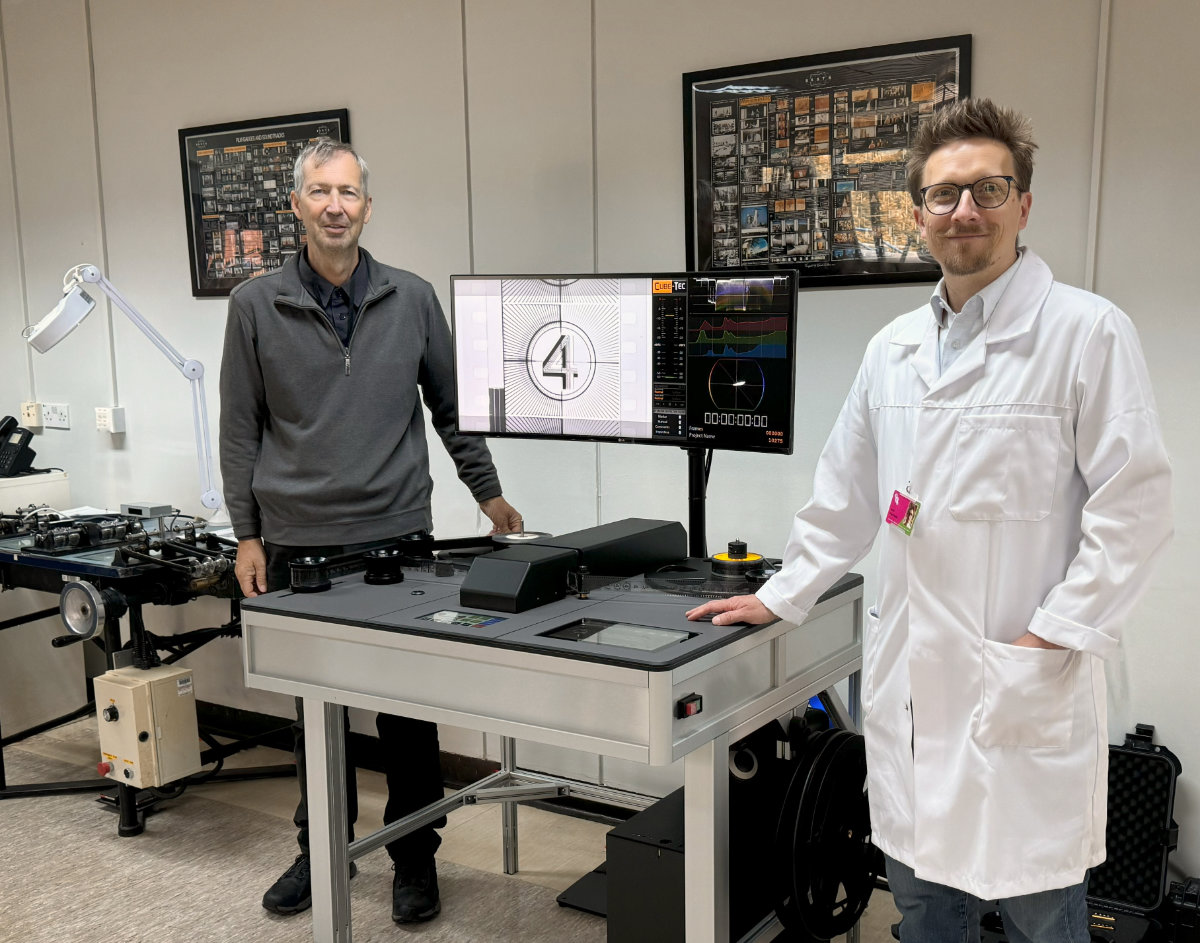The BFI National Archive installs four INSPECTIONscan tables
With its four brand new INSPECTIONscan systems, the BFI National Archive has dramatically increased efficiency for inspecting its film treasures and making them accessible without risking fragile film reels.

Click to Enlarge
The BFI National Archive is one of the largest and most significant and wide-ranging collections in the world.
The BFI recently announced its 10-year strategy for film and the moving image, Screen Culture 2033, with the ambition to make the BFI National Archive the most open moving image collection in the world. Supporting this, the ability to inspect film reels quickly and easily is essential. A network accessible viewing copy must be created that accurately depicts the entire film, edge-to-edge, with an automatic diagnostic report; condition of the archive material must be documented and that documentation can be further enriched by the user if required.
Following the award of a grant from the Department of Science, Innovation and Technology’s Research and Innovation Organisations Infrastructure Fund in January 2024, the BFI National Archive purchased the INSPECTIONscan systems.
With the support of the German company Cube-Tec International, four QUADRIGA•INSPECTIONscan film scanners were integrated into the existing workflows. INSPECTIONscan makes it possible to quickly digitise and analyse 16mm and 35mm film reels from the BFI National Archive's extensive film collections, as well as magnetic films in all common soundtrack formats.
The Cube-Tec team installed the scanners directly on site at the BFI National Archive Conservation Centre in Berkhamsted, Hertfordshire and ensured that all technical requirements were met. The installation and commissioning of the systems went smoothly and a short time later the BFI staff were able to gain their first experience with the new devices. In order to optimise the operation of the scanners and fully exploit their potential, Cube-Tec carried out comprehensive training on site. In addition to this, further training and courses are offered via remote connections to provide operators with ongoing support.
An additional QUADRIGA•QC-View workstation builds the interface to the internal secure production network infrastructure. It also describes the first and important step in the QC chain to move curation work into the digital domain, without occupying one of the four INSPECTIONscan systems. Once the files have reached the central archive storage, the operators also get access to the additional reporting outputs of the INSPECTIONscan systems in already proven formats such as Excel spreadsheet and DaVinci Resolve project files with time markers and filters.
INSPECTIONscan functions like a viewing table on which the film reels can be moved very gently at the desired speed for visual inspection, while at the same time technical data is extracted to document the photochemical and mechanical condition of the inspected film material.
The film transport is so smooth that it comes close to a mechanical film rewinder in terms of the safe handling of damaged, curled and poorly spliced film material. This means that inspection of film reels can be carried out without any further preparations.
Particular attention was paid to ensuring that the new systems were seamlessly integrated into BFI's existing workflow. Cube-Tec was on hand to provide advice and help staff to use the scanners in the best possible way. A major advantage of INSPECTIONscan is the significant time saving achieved through the digitisation and automatic analysis of the films. Tasks that were previously carried out in analogue and time-consuming ways.

Click to Enlarge
Kieron Webb, Head of Conservation at the BFI National Archive, says:
We were looking for a solution that would enable both viewing and assessment, with flexible film handling and appropriate set-up times, to enable conservators and curators to exercise their expertise.”
Jörg Houpert, Head of Technology at Cube-Tec International, explains:
INSPECTIONscan enables a new way of working that allows much faster access to the archive contents. The automatically generated Inspection Report documents, for example, the degree of shrinkage and the optical density of the film material, even frame by frame dynamically across the entire film length. The current condition of the film material is thus documented in a level of detail that would hardly be reasonable for an archivist. And every INSPECTIONscan station can provide this for hundreds of film reels a week”
Conclusion
The installation of the four INSPECTIONscan film scanners at the BFI National Archive by Cube-Tec marks an important milestone in the care and preservation of the UK’s film heritage. The newly introduced technology enables the BFI to make its workflows more efficient and concentrate on improved conservation. With these improvements, the BFI National Archive is equipped to meet the challenges of modern film archiving and strengthen its leading role in the preservation of film history.
For more information on INSPECTIONscan visit INSPECTIONscan.one

